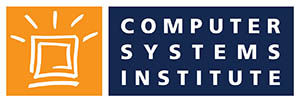In this digital age, we still have our resumes with lists of educational and professional accomplishments. Still, another element has risen to prominence in place of the traditional cover letter — the personal bio.
Since so much professional networking, job-seeking, and application has moved to the online space, the personal bio has never been more important. It’s basically a short self-introduction that acts as a kind of summary designed to draw employers and other interested parties into your more comprehensive resume/profile.
With everyone writing their personal bio, how do you make yours truly stand out? That’s a question we want to answer in today’s blog.
Short Bio Vs. Full Professional Bio
First of all, we should be clear on the difference between a short bio and a full bio. A short bio is one that you will commonly find attached to your social media accounts such as Facebook, LinkedIn, Twitter, etc. Since many potential employers now check personal social media profiles, it’s a good idea to review your own bio. A good small bio will contain the following information:
? Name and current professional role or academic placement
? Your ultimate goal in your professional and personal life
? Your biggest achievement(s) to date – only the highlights, not everything
As for a full bio, there’s additional information that you’ll want to add in, which we’ll cover in more detail in the next section. LinkedIn gives users quite a bit of space to put in a personal introduction, which acts as your bio. When the platform allows you more room, it’s a good idea to use it, but you also shouldn’t go overboard. Let’s look at what to include in an effective bio.
What to Include in an Effective Bio
As with the short bio, you should start with your name. A nice hook to a bio can be a sentence about your name, what it means, or why your family chose it. It doesn’t always work, but in cases where your name is especially meaningful, it’s a great way to hook in readers without looking unprofessional. It can show a bit of artistic writing flair too.
Next, be sure to mention your current working or academic situation. Explain your position, what you’re doing and what responsibilities you currently hold. As you can see, we’re starting with a lot of simple information, but that’s also helpful because it makes it easy to read at the start, so people will be more likely to keep reading.
Another addition early on in your bio should be something that some people refer to as your “North Star.” If you’re from the southern hemisphere, you might call it your “Southern Cross.” What is this? It refers to a statement that summarizes your main principles and values. Employers and others today are very interested in people’s values and beliefs. They are a key part of what they call “cultural fit,” which means when a company wonders if your personality and outlook will be a good fit with existing team members. So, create a statement that describes your ethos, outlook on life, and what beliefs you hold nearest and dearest.
Finally, your bio should include a “top 3” of your main academic or professional achievements to date. We say a ‘top 3’ because if you have already accumulated a lot of work experience, then these lists of achievements can get long and dull. If you list too many achievements, you risk putting off readers who may think the list is exaggerated. More importantly, listing all of your successes shows you can’t prioritize and isolate the “stand-out” achievements.
Tips on Standing Out from the Crowd
Make a Plan and a Draft
Don’t just start writing your bio directly. Create a plan for a structure and make lists of your achievements and goals. When making your list, try to get everything down on paper or on your screen so you can see it all and then isolate the ones you want to use in your “top 3.” Draft a few versions of your bio using different styles and structures and see which one feels the best to you. Choose the one that felt the most natural to write and that you think reads the most smoothly.
Include a Hook
Just like any advertisement that gets people’s attention, you need something gripping and interesting to use at the start of your bio. Above, we mentioned an idea of using something about your name. This can work for some, but others may decide to use a famous quote, a line of poetry or literature, something about their childhood or background, or a short idea or comment about someone in their field they admire. The scope for hooks is very wide. The more interesting the first sentence, the better chance your audience has of reading the whole thing.
Tell Your Story
Facts and figures have their place in your personal info, but your bio should try its best to tell a story of where you started, how far you’ve come, and where you are now. Proving that you’ve progressed, grown, and matured through your academic and working life is very important. A more story-like bio is one that is more engaging to read.
Your bio may not be very long in terms of word count, but it is still your digital first impression to potential employers and institutions of higher learning. So, invest time and effort to make it just perfect.
If you’d like to add to your list of academic achievements,?contact CSI?to learn more about our variety of Business, Healthcare, and Networking programs.







